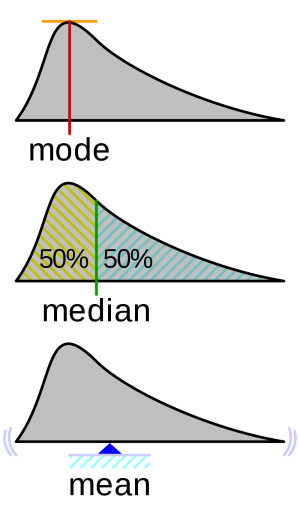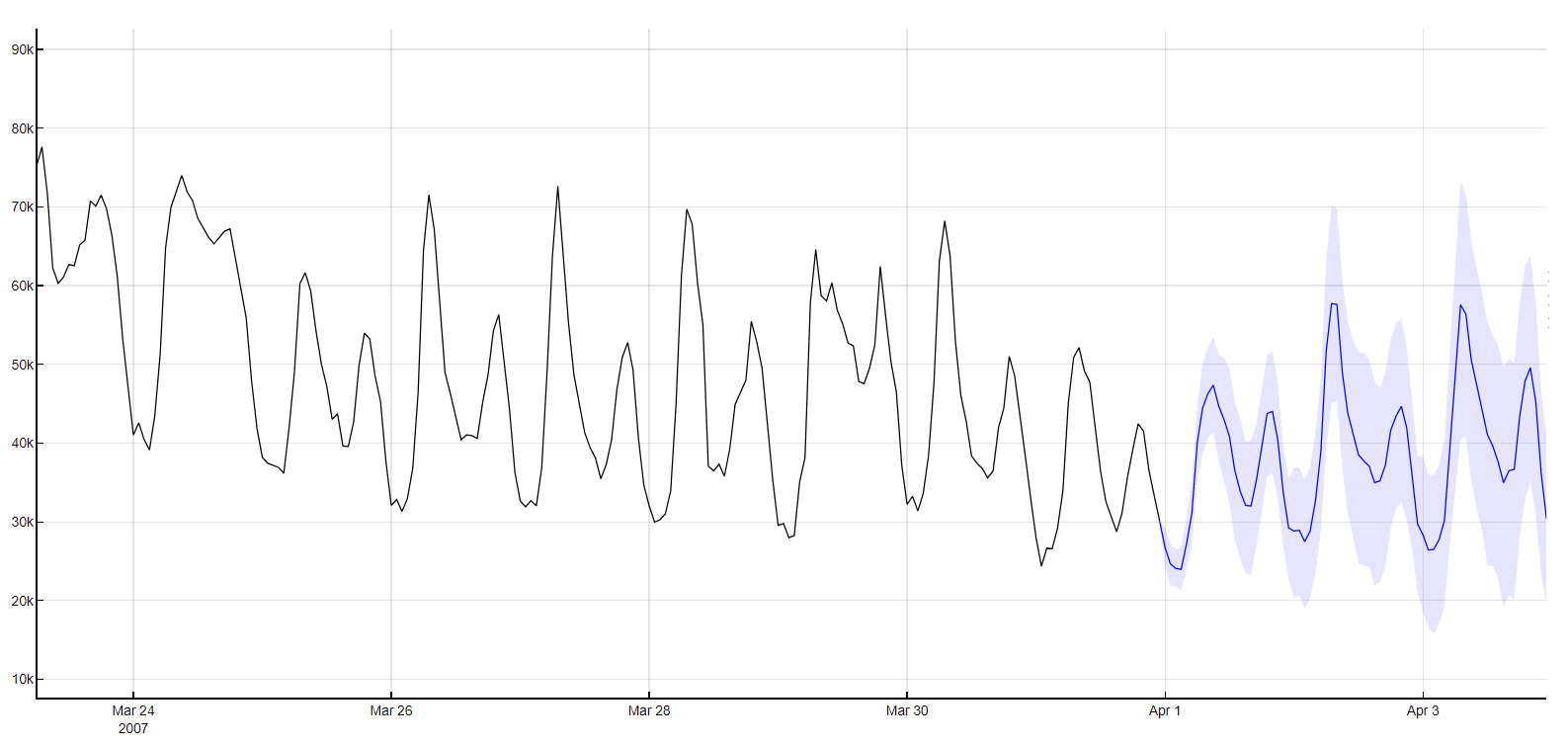Probabilistic Forecasting and Prediction Intervals
The purpose of prediction intervals is to express the uncertainty of the forecasts. Mathematically, prediction intervals are slightly different from confidence intervals (learn more about the distinction in this article), but they serve the same purpose of enhancing your predictions with probabilistic forecasting to deal with uncertainty.
To obtain 95 and 5 percent prediction intervals, TIM computes quantiles from the errors between the target and its forecasts on the data used for model building. That way, the interval is thin for situations where the uncertainty is small (e.g. forecasting solar production in the middle of the night) and wider for situations with a higher level of uncertainty (e.g. a forecast very far ahead).
This 95 and 5 percent pair can be referred to as a 90 percent symmetric prediction interval and it could be translated as "an interval, where the actual value will be contained in 90 percent of the time". This confidence level can be manipulated to best suit each users business needs depending on the trade-off between the cost of over-forecasting and under-forecasting in each business use case.
Since TIM's forecast is an estimate of the mean of a random distribution (a so-called mean forecast), it might sometimes happen that it does not lie inside this interval. This is caused by the fact that for some distributions the median largely differs from the mean.

The confidence level of the prediction intervals can be changed in the configuration. Prediction intervals are returned for each of the forecasts in TIM's forecasting output.
